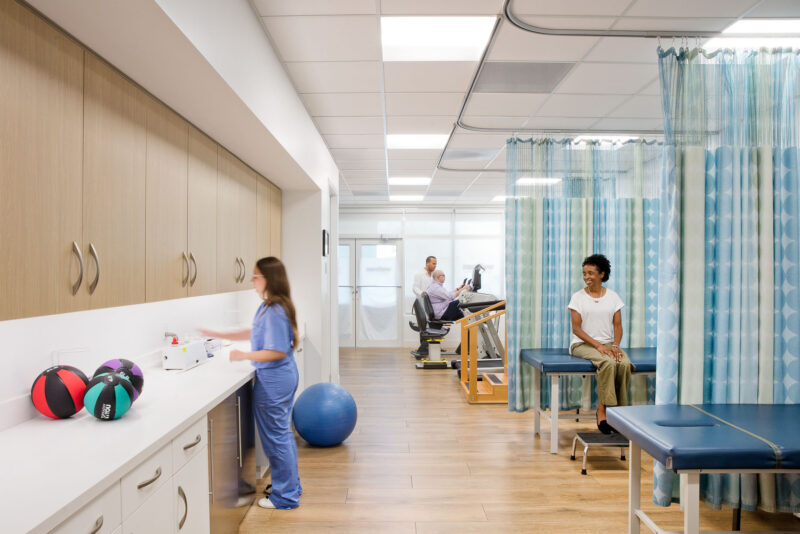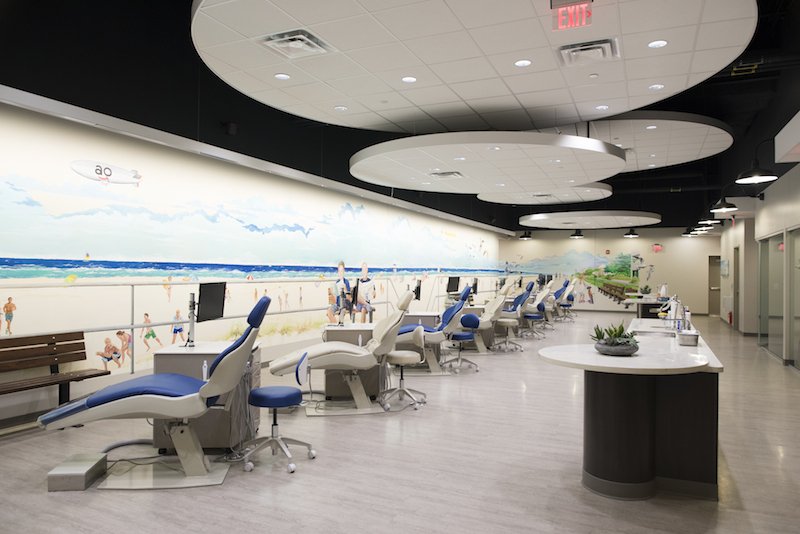Why Is Interior Design Important in the Healthcare Industry?

Have you ever walked into a medical facility and felt a sense of dread? Interior design might not be the first thing that comes to mind when you think about healthcare, but it plays a big role in shaping patient experiences. We cannot overstate the importance of creating an inviting environment within medical facilities. Here’s why tasteful interior design is important in the healthcare industry and how to design a pleasant healthcare space.
Spurring Recovery through Thoughtful Design
The importance of interior design in the healthcare industry lies in its ability to promote comfort among patients and staff. A thoughtfully designed medical office or hospital can reduce patient stress and boost mood, which can quicken recovery. A calm and soothing ambiance could improve outcomes in treatment, as it helps patients feel relaxed and reassured in their surroundings.
Facilitating Better Workflow and Efficient Care
An efficient floor plan and space allocation are crucial for healthcare establishments. Thoughtful interior design can improve staff workflow, leading to more effective patient care. By organizing spaces according to zoning, adjacencies, and ease of movement, medical staff can offer better healthcare.
Prioritizing Infection Control and Hygiene
In healthcare environments, maintaining cleanliness is of utmost importance to avoid the spread of pathogens. Modern interior design solutions can contribute positively toward infection control with easy-to-clean materials and surfaces. By incorporating antimicrobial surfaces and durable fabrics, healthcare facilities can offer more hygienic spaces for patients and personnel.

Compliance with Regulations and Standards
The interior design of healthcare facilities must comply with health codes, fire codes, and local building codes. Interior designers in the healthcare industry are well-versed in these standards. They make sure everything, from the furniture to the lighting, meets the industry’s standards.
Increased Facility Reputation
A healthcare facility’s reputation rests on the experiences of patients and the care delivered by medical staff. Additionally, interior design can have a profound impact on the experiences of visitors, such as a patient’s family. An aesthetically pleasing and well-designed facility can create a good first impression and make visitors feel more comfortable. Positive word of mouth from satisfied patients could enhance a medical facility’s reputation and attract more patients.
Incorporating Ergonomic Designs
Healthcare professionals work long hours and perform strenuous tasks, making it crucial to use ergonomic designs in healthcare facilities. An ergonomically designed workspace can reduce staff stress levels, increase productivity, and reduce the risk of staff injuries. Such healthcare spaces can also keep positive attitudes among staff and improve the way they care for patients.
The Takeaway: The Significance of Interior Design in Healthcare
The role of interior design in the healthcare industry is much more than creating an aesthetically pleasing environment. It directly impacts patient well-being, staff efficiency, and health outcomes. By considering various aspects of patient room design and welcoming areas, interior designers in the healthcare industry can create an environment that promotes healing and comfort for everyone. Next time you visit a medical office or facility, take a closer look at its design and appreciate the thought that went into crafting a comfortable and healing space.






